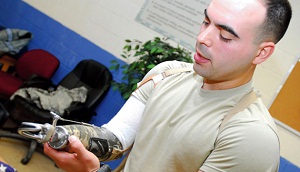Attention A T users. To access the menus on this page please perform the following steps.
1. Please switch auto forms mode to off.
2. Hit enter to expand a main menu option (Health, Benefits, etc).
3. To enter and activate the submenu links, hit the down arrow.
You will now be able to tab or arrow up or down through the submenu options to access/activate the submenu links.
Locator
Contact
Search
VA »
Health Care »
War Related Illness and Injury Study Center
» Education Resources
»
Traumatic Amputations
War Related Illness and Injury Study Center
Menu
Menu
- War Related Illness and Injury Study Center
- WRIISC Home
- About Us
- Clinical Services
- Referrals
- Airborne Hazards & Burn Pits Center of Excellence
- Women’s Operational Military Exposure Network
- Complex Exposure Threats Center of Excellence
- Research
- Education
- Training/Mentorships
- Veteran Viewpoints
- FAQ
- Calendar
- Contact Us
- Veterans & Public Health
- More Health Care
- Veterans Health Administration
- Health Benefits
- Conditions & Treatments
- Wellness Programs
- Locations
- Research
- Special Groups
- Careers, Job Help & Training
- About VHA
Traumatic Amputations
 |
Some Veterans who are deployed to areas of combat may experience traumatic injuries that result in amputations. Amputation is defined as the removal of a body extremity by trauma or surgery.
Amputations often occur when a limb or part of a limb threatens one's health, and as a result, the limb or part of the limb is surgically removed.Some residual problems related to amputations include:
- Phantom pain (a feeling of pain in the missing limb)
- Surgical complications
- Skin problems
- Heterotopic ossification which can occur when overgrowth of bone occurs instead of scar tissue formation
- Grief
There are many effective treatments for these health problems including:
- Medications
- Protective dressings
- Therapies
- Health education



















